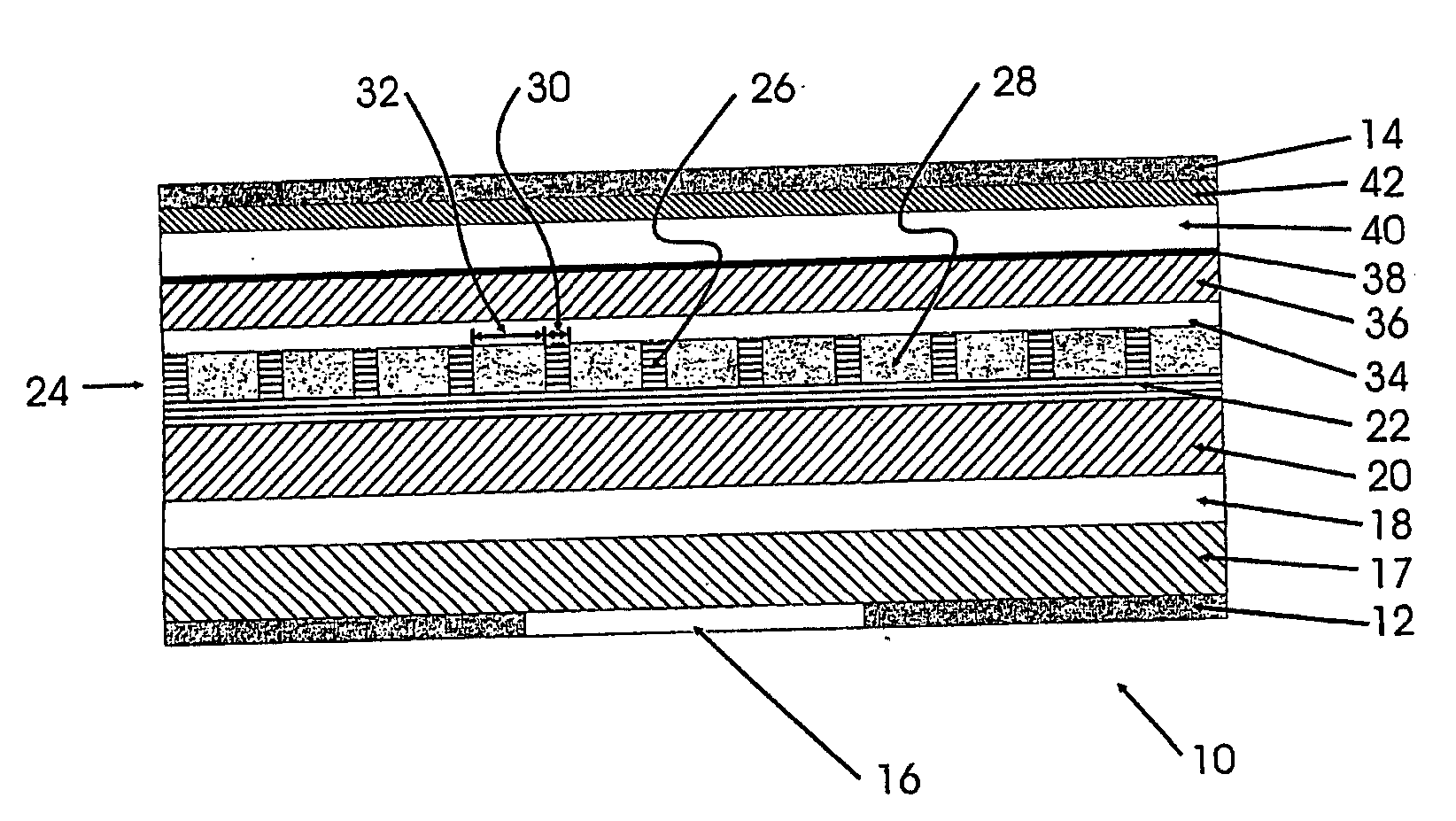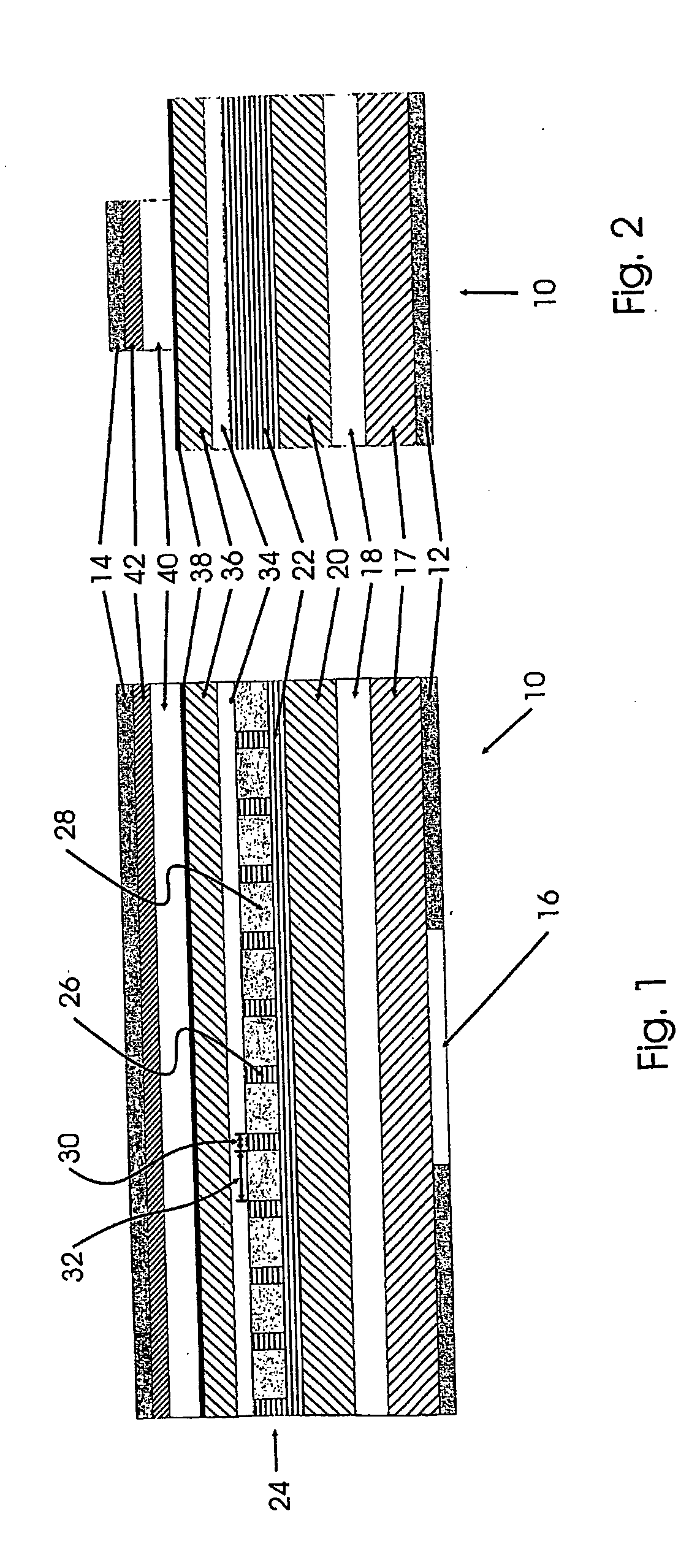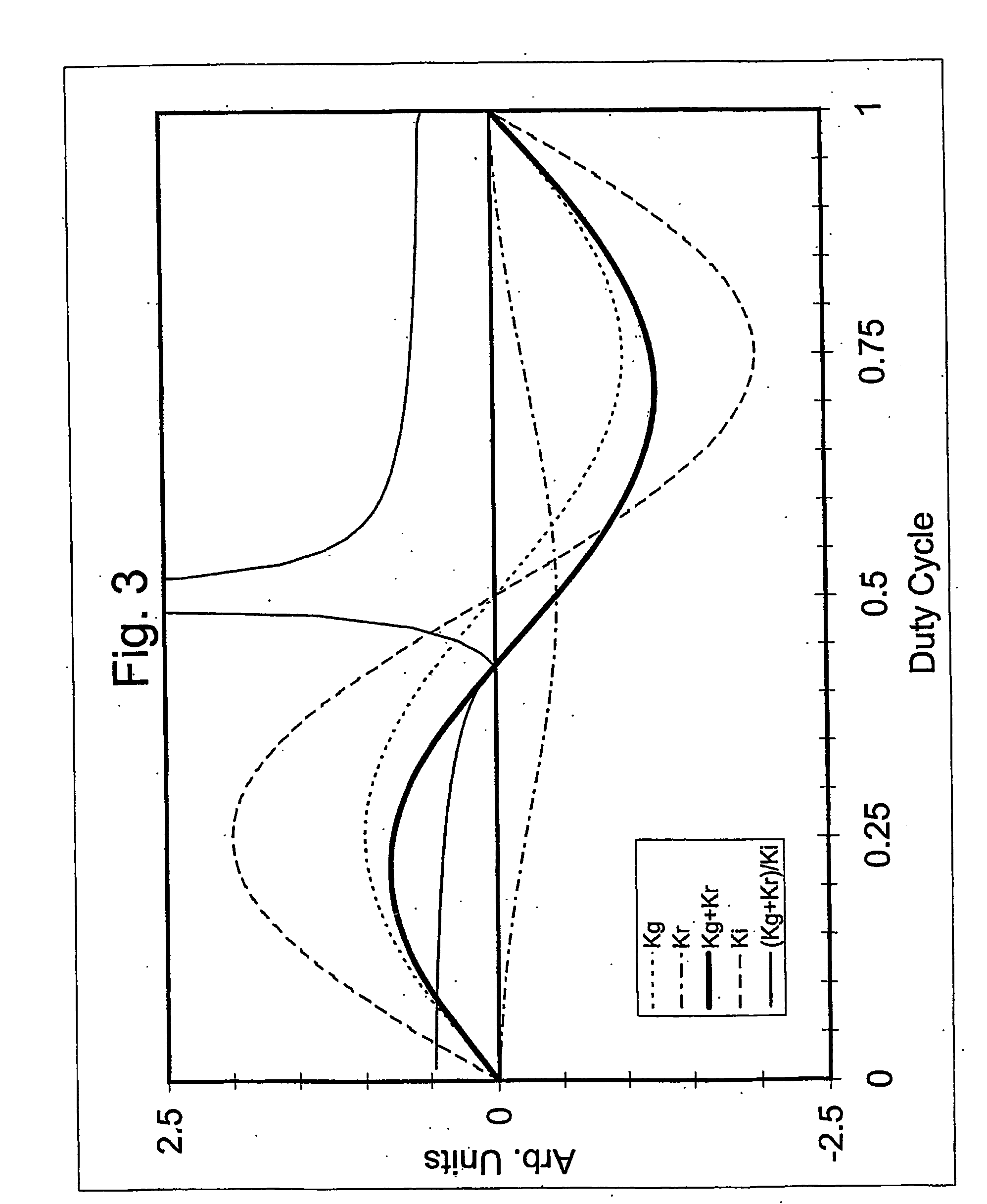Surface emitting dfb laser structures for broadband communication systems and array of same
a laser structure and surface-emitting technology, applied in the field of optical signal-based telecommunication systems, lasers, can solve the problems of increased cost, difficulty in necessary techniques, and difficulty in supplying signal carrier sources, and achieve the effects of reducing costs, reducing costs, and reducing costs
- Summary
- Abstract
- Description
- Claims
- Application Information
AI Technical Summary
Benefits of technology
Problems solved by technology
Method used
Image
Examples
Embodiment Construction
[0038]FIG. 1 is a side view of one embodiment of a surface emitting semiconductor laser structure 10 according to the present invention, while FIG. 2 is an end view of the same structure. The laser structure 10 is comprised of a number of layers built up one upon the other using, for example, standard semiconductor fabrication techniques. It will be appreciated that the use of such known semiconductor fabrication techniques for the present invention means that the present invention may be fabricated efficiently in large numbers without any new manufacturing techniques being required.
[0039] In this disclosure the following terms shall have the following meanings. A p-region of a semiconductor is a region doped with electron acceptors in which holes (vacancies in the valence band) are the dominant current carriers. An n-region is a region of a semiconductor doped so that it has an excess of electrons as current carriers. An output signal means any optical signal which is produced by ...
PUM
 Login to View More
Login to View More Abstract
Description
Claims
Application Information
 Login to View More
Login to View More - R&D
- Intellectual Property
- Life Sciences
- Materials
- Tech Scout
- Unparalleled Data Quality
- Higher Quality Content
- 60% Fewer Hallucinations
Browse by: Latest US Patents, China's latest patents, Technical Efficacy Thesaurus, Application Domain, Technology Topic, Popular Technical Reports.
© 2025 PatSnap. All rights reserved.Legal|Privacy policy|Modern Slavery Act Transparency Statement|Sitemap|About US| Contact US: help@patsnap.com



